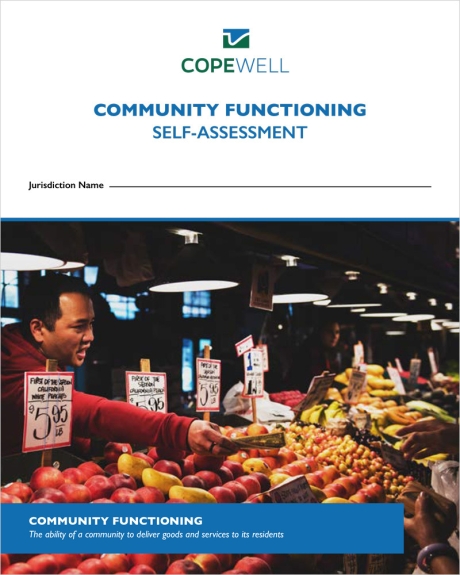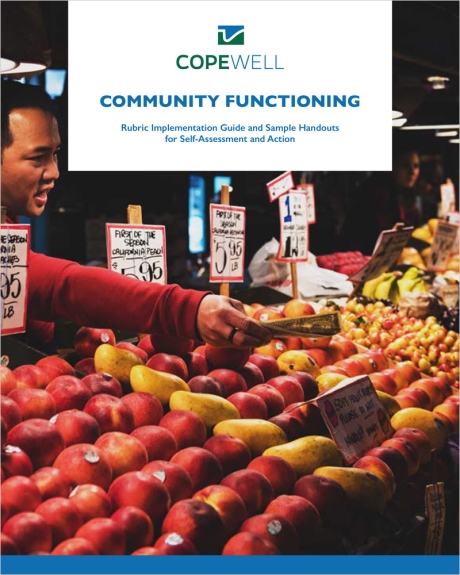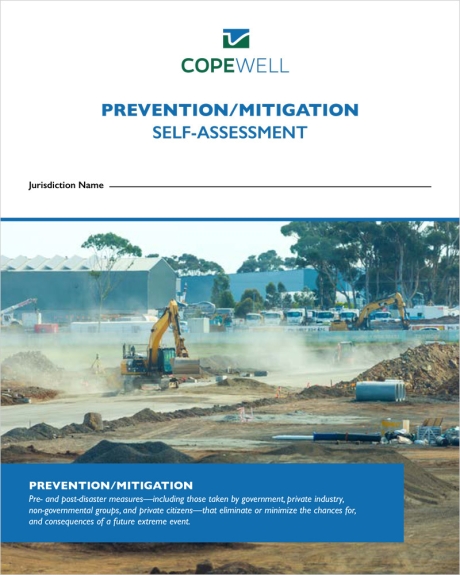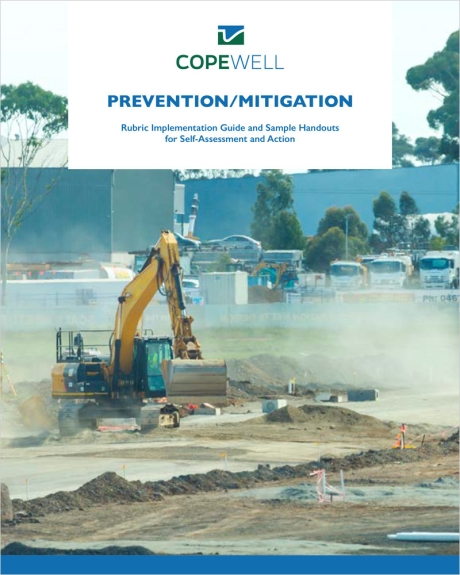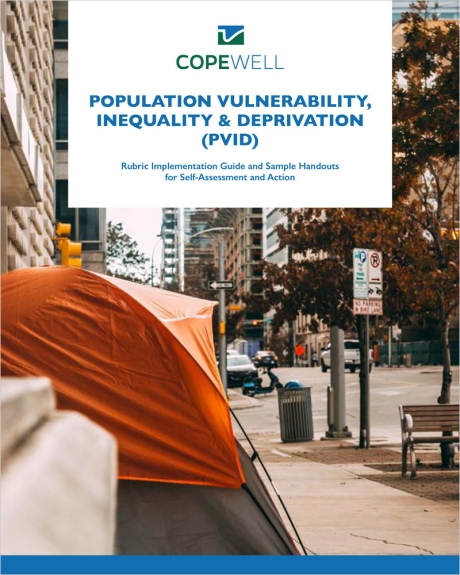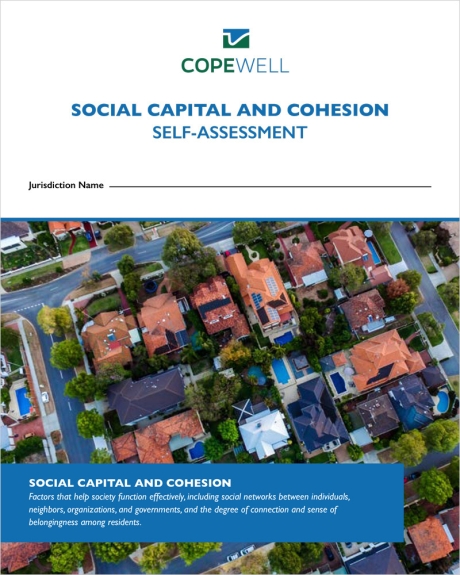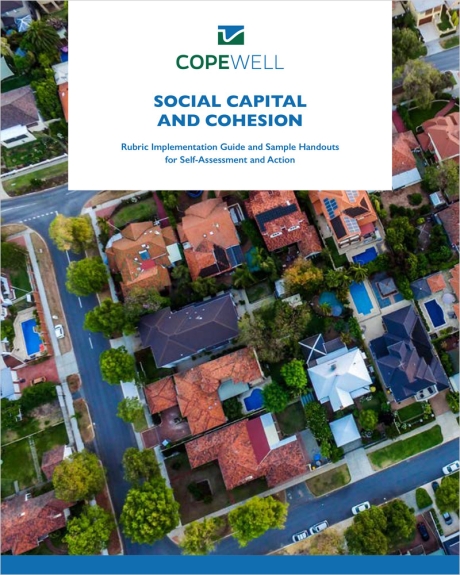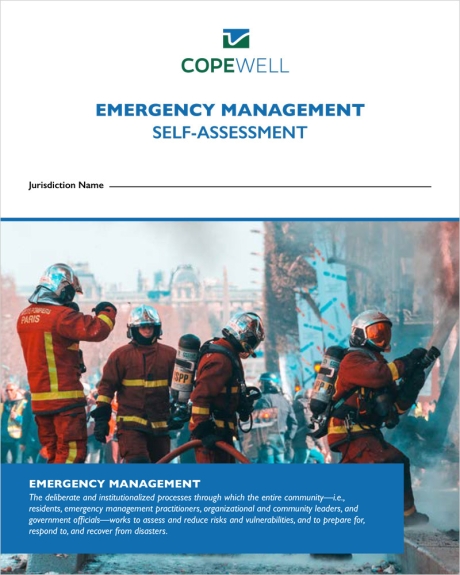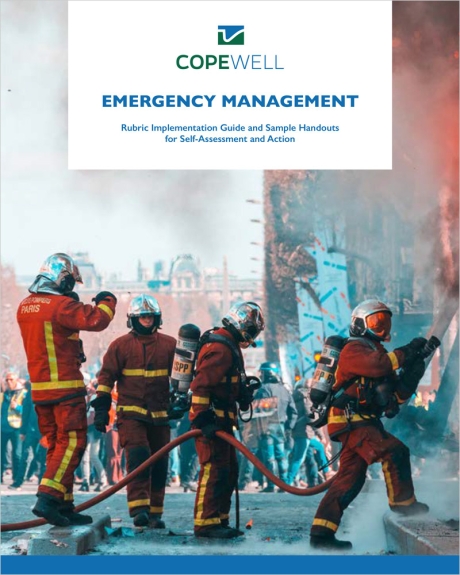
Self-Assessment Tools
What If You Could Conduct Your Own Assessment of Community Functioning and Resilience?
The COPEWELL self-assessment rubric tools and implementation guides have been designed to give communities an opportunity to engage in the process of bringing together diverse expertise across community sectors to discuss, assess, strategize, plan, and improve and enhance community resilience to disasters.
Learn more about the self-assessment process here:

Each of the five self-assessment rubric tools below map directly to the COPEWELL model elements of Pre-Event Functioning (Community Functioning), Resistance (Prevention/Mitigation and Population Vulnerability, Inequality and Deprivation (PVID)), and Recovery (Social Capital and Cohesion and Emergency Management). Used individually, the rubrics will help communities focus their attention on specific areas of need or concern. Used together, the rubrics will help paint a holistic picture of community resilience and inspire communities to take action to enhance resilience to disasters.
“The COPEWELL rubric provides a tool to maximize participation and engagement to yield valuable community-level data that far exceeds what we have been able to glean from traditional data sources and community meetings”
- Janet Zeis, Chester County Community Resilience Coordinator (former)
“The COPEWELL model has been an extremely helpful tool in helping build a network across sectors, and the tools have provided a useful process toward actions to increase local community resilience. Each person can see the role of their organization within the model and understand how their work relates to others across community functioning, resistance, and recovery.”
- Michelle Morris, Ready North Mobilizer; Director of Community Philanthropy, Duluth Superior Area Community Foundation
